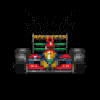SiLo wrote: ↑17 Nov 2021, 12:27
The interesting thing for me to see is how much rake will they run on the cars? They already seal the floors off as much as they can with vortices, but the removal of the barge board areas being so complicated means it's much harder to do.
My best guess is that rake will reduce, the tunnel exits are, to a degree, assisted by the inner rear wheel ‘furniture’ (which WOULD lend itself to being effective with a high-rake concept); however, the horizontal floor edge probably mitigates against too much rake. There will undoubtedly be a sweet-spot, but that is likely to depend on the level of airflow control found from the strakes at the ‘tunnel’ entrance.
Bare in mind that these are not the same as the ‘ground-effect’ era cars, but an evolution of what is already done in the lower region of the current ‘barge-board’ array.
Coupled with the new suspension control system regulations, it is going to very interesting to see what the teams come up with!!
Perspective - Understanding that sometimes the truths we cling to depend greatly on our own point of view.

